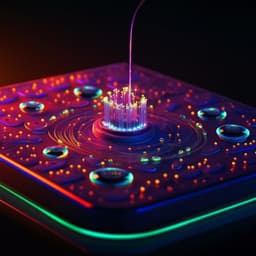
Chemistry
Dynamic wrinkling pattern exhibiting tunable fluorescence for anticounterfeiting applications
T. Ma, T. Li, et al.
This paper showcases a groundbreaking supramolecular network that enables dynamic dual patterning in bilayer wrinkling systems, where both wrinkle morphology and fluorescence can be adjusted using visible light or acids. The innovative surface can switch between smooth and wrinkled states, with fluorescence changing from blue to orange-red. Conducted by Tianjiao Ma, Tiantian Li, Liangwei Zhou, Xiaodong Ma, Jie Yin, and Xuesong Jiang, this research highlights potential anticounterfeiting applications.
Playback language: English
Related Publications
Explore these studies to deepen your understanding of the subject.







